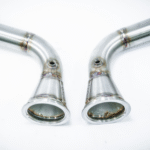Boundary disputes are a common issue in real estate and land ownership, often arising from unclear property lines or misunderstandings between neighboring landowners. These conflicts can lead to significant legal and financial consequences if not addressed promptly. Boundary disputes surveying is an essential process that helps identify, clarify, and resolve these disputes. This article explores the importance of boundary disputes surveying, the methods employed in the process, and how professional surveyors play a crucial role in achieving resolution.
The Importance of Boundary Disputes Surveying
Boundary disputes surveying is vital for several reasons:
- Legal Clarity: Accurate boundary surveys provide legal clarity regarding property lines, helping to prevent future conflicts between neighbors. A definitive boundary helps property owners understand their rights and responsibilities concerning their land.
- Property Value Protection: Boundary disputes can negatively impact property values. By clearly defining property lines, boundary disputes surveying protects property investments and ensures that landowners can utilize their property without the threat of encroachment or legal action.
- Dispute Resolution: In many cases, boundary disputes can escalate into legal battles that are costly and time-consuming. Professional surveyors can mediate disputes and offer objective evidence, making it easier for parties to reach a mutually agreeable solution without resorting to litigation.
Common Causes of Boundary Disputes
Boundary disputes can arise from various circumstances, including:
- Misinterpretation of Deeds: Property deeds often contain legal descriptions that can be complex and difficult to interpret. Misunderstandings about these descriptions can lead to conflicting claims over property lines.
- Natural Changes: Erosion, shifting soil, and changes in waterways can alter physical property boundaries. When these natural changes occur, property owners may find themselves in conflict over the new positions of boundary markers.
- Historical Claims: Inherited properties can come with historical claims or outdated surveys that no longer accurately reflect current boundaries. This can lead to disputes, especially if neighboring properties have undergone changes.
- Improperly Installed Fences: Fences are often erected as boundary markers. However, if a fence is placed incorrectly, it can lead to disputes about where one property ends and another begins.
The Boundary Disputes Surveying Process
The process of boundary disputes surveying involves several key steps:
1. Initial Consultation
When property owners suspect a boundary dispute, the first step is to consult with a licensed surveyor. During this initial meeting, the surveyor will gather information about the property, including deeds, previous surveys, and any relevant documentation.
2. Field Survey
A professional surveyor conducts a field survey to gather data about the property. This involves using specialized equipment, such as total stations and GPS technology, to measure distances and angles accurately. The surveyor will also look for existing boundary markers and any evidence of previous surveys.
3. Data Analysis
After collecting field data, the surveyor analyzes the information to determine the correct property boundaries. This may involve reviewing historical records, consulting legal descriptions, and considering any natural changes that may have affected the land.
4. Boundary Determination
Based on the analysis, the surveyor establishes the property’s boundary lines. They will create a new survey drawing that clearly delineates the boundaries, often including notations about any encroachments or potential conflicts.
5. Reporting and Documentation
The surveyor prepares a comprehensive report outlining their findings, which may include maps, diagrams, and legal descriptions of the established boundaries. This documentation is essential for resolving disputes and can serve as legal evidence if necessary.
6. Mediation and Resolution
In some cases, the surveyor may act as a mediator between disputing parties, helping to facilitate discussions and negotiations. The goal is to reach a consensus based on the survey results, thereby avoiding lengthy legal battles.
The Role of Professional Surveyors
Professional surveyors are integral to the boundary disputes surveying process. They possess the expertise and knowledge necessary to interpret complex legal descriptions, utilize advanced surveying technologies, and navigate the intricacies of property law. Their impartiality and professionalism help build trust among disputing parties, making it easier to achieve a fair resolution.
Qualifications and Standards
To perform boundary disputes surveying, surveyors must have appropriate qualifications and adhere to industry standards. Most jurisdictions require surveyors to be licensed, which involves completing a degree in surveying or a related field, gaining practical experience, and passing a licensing exam. Continuing education is also essential to stay updated on laws and technologies.
Conclusion
Boundary disputes surveying is a critical service that helps property owners navigate the complexities of land ownership and resolve conflicts amicably. By employing skilled surveyors, individuals can gain clarity on their property boundaries, protect their investments, and foster positive relationships with neighbors. Understanding the process and importance of boundary disputes surveying is essential for anyone involved in property ownership or real estate transactions, ensuring a smoother and more informed approach to managing land disputes.










Leave a Reply
You must be logged in to post a comment.